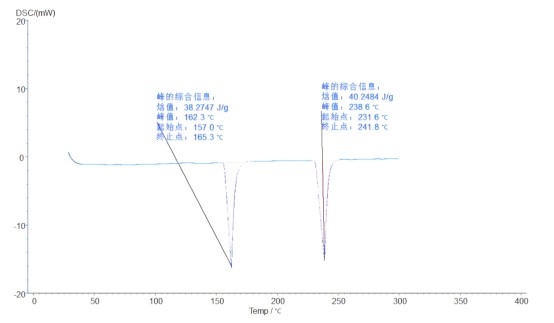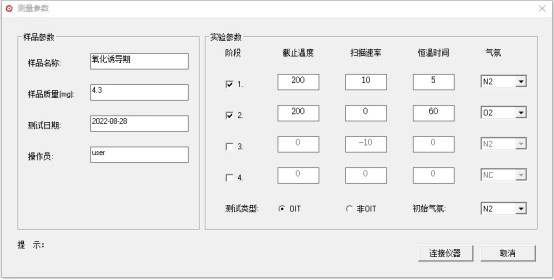Experimental method: DSC differential scanning calorimetry is a method to test the degree of accelerated aging of plastics in high-temperature oxygen based on the exothermic reaction when the plastic molecular chain breaks.
Experimental principle: Using the working principle of DSC, the energy difference between the test sample and the blank reference in an oxygen atmosphere at a certain temperature is plotted as a graph against time to obtain the oxidation induction time, thereby determining the exothermic antioxidant properties of the sample.
Experimental instruments: differential scanning calorimeter (DSC1000A), 1/10,000 precision balance, aluminum crucible, industrial nitrogen and oxygen, etc.
Steps:
- Use the standard melting points of elemental indium (156.6 degrees) and tin (231.9 degrees) to calibrate the instrument temperature.

- Use a balance to weigh 3-5 mg of sample and place it in an aluminum crucible.
- Place a blank aluminum crucible on the left tray of the instrument as a reference, and place the sample crucible on the right tray.
- Open the operating software and set the experimental parameters.

- Analyze the experimental spectrum to obtain the oxidation induction time.
Experimental analysis: The sample undergoes an endothermic reaction in a nitrogen atmosphere and slowly melts. The DSC spectrum has a downward peak. When the experimental temperature reaches 200 degrees and oxygen is introduced, the DSC spectrum tends to be horizontal because the sample has a certain degree of antioxidant properties. After 30.1 minutes, the DSC spectrum begins to have an upward trend, indicating that the sample has undergone an oxidation reaction with oxygen, and the experimental results are obtained.
